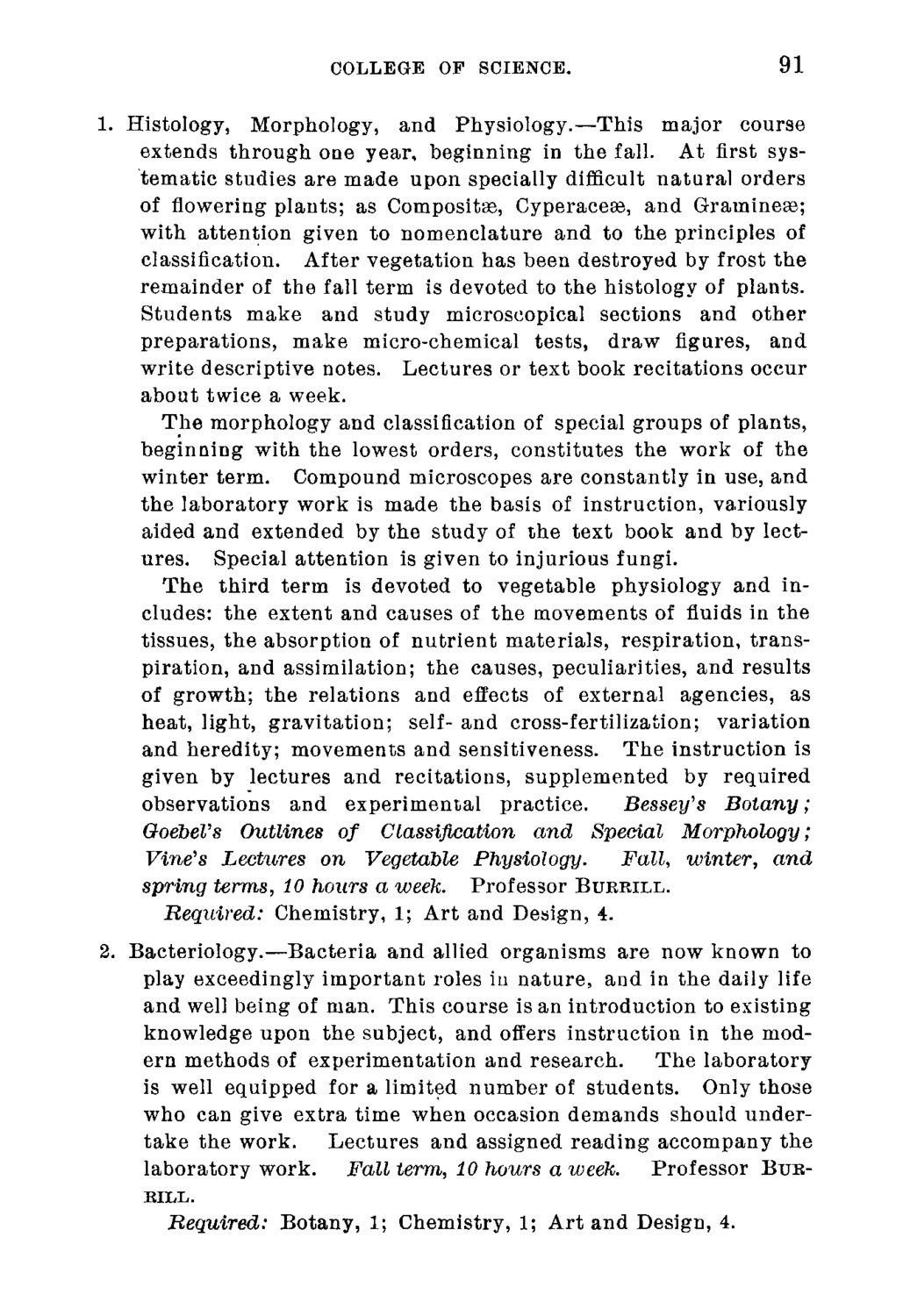| |
| |
Caption: Course Catalog - 1891-1892
This is a reduced-resolution page image for fast online browsing.

EXTRACTED TEXT FROM PAGE:
COLLEGE OF SCIENCE. 91 1. Histology, Morphology, and Physiology.—This major course extends through oae year, beginning in the fall. At first systematic studies are made upon specially difficult natural orders of flowering plants; as Composite, Cyperaceas, and Grainineas; with attention given to nomenclature and to the principles of classification. After vegetation has been destroyed by frost the remainder of the fall term is devoted to the histology of plants. Students make and study microscopical sections and other preparations, make micro-chemical tests, draw figures, and write descriptive notes. Lectures or text book recitations occur about twice a week. The morphology and classification of special groups of plants, beginning with the lowest orders, constitutes the work of the winter term. Compound microscopes are constantly in use, and the laboratory work is made the basis of instruction, variously aided and extended by the study of the text book and by lectures. Special attention is given to injurious fungi. The third term is devoted to vegetable physiology and includes: the extent and causes of the movements of fluids in the tissues, the absorption of nutrient materials, respiration, transpiration, and assimilation; the causes, peculiarities, and results of growth; the relations and effects of external agencies, as heat, light, gravitation; self- and cross-fertilization; variation and heredity; movements and sensitiveness. The instruction is given by lectures and recitations, supplemented by required observations and experimental practice. Bessey's Botany; Goebel's Outlines of Classification and Special Morphology; Vine's Lectures on Vegetable Physiology. Fall, winter, and spring terms, 10 hours a week. Professor BUKRILL. Required: Chemistry, 1; Art and Design, 4. 2. Bacteriology.—Bacteria and allied organisms are now known to play exceedingly important roles in nature, and in the daily life and well being of man. This course is an introduction to existing knowledge upon the subject, and offers instruction in the modern methods of experimentation and research. The laboratory is well equipped for a limited number of students. Only those who can give extra time when occasion demands should undertake the work. Lectures and assigned reading accompany the laboratory work. Fall terra, 10 hours a week. Professor BTJEBELL. Required: Botany, 1; Chemistry, 1; Art and Design, 4.
| |